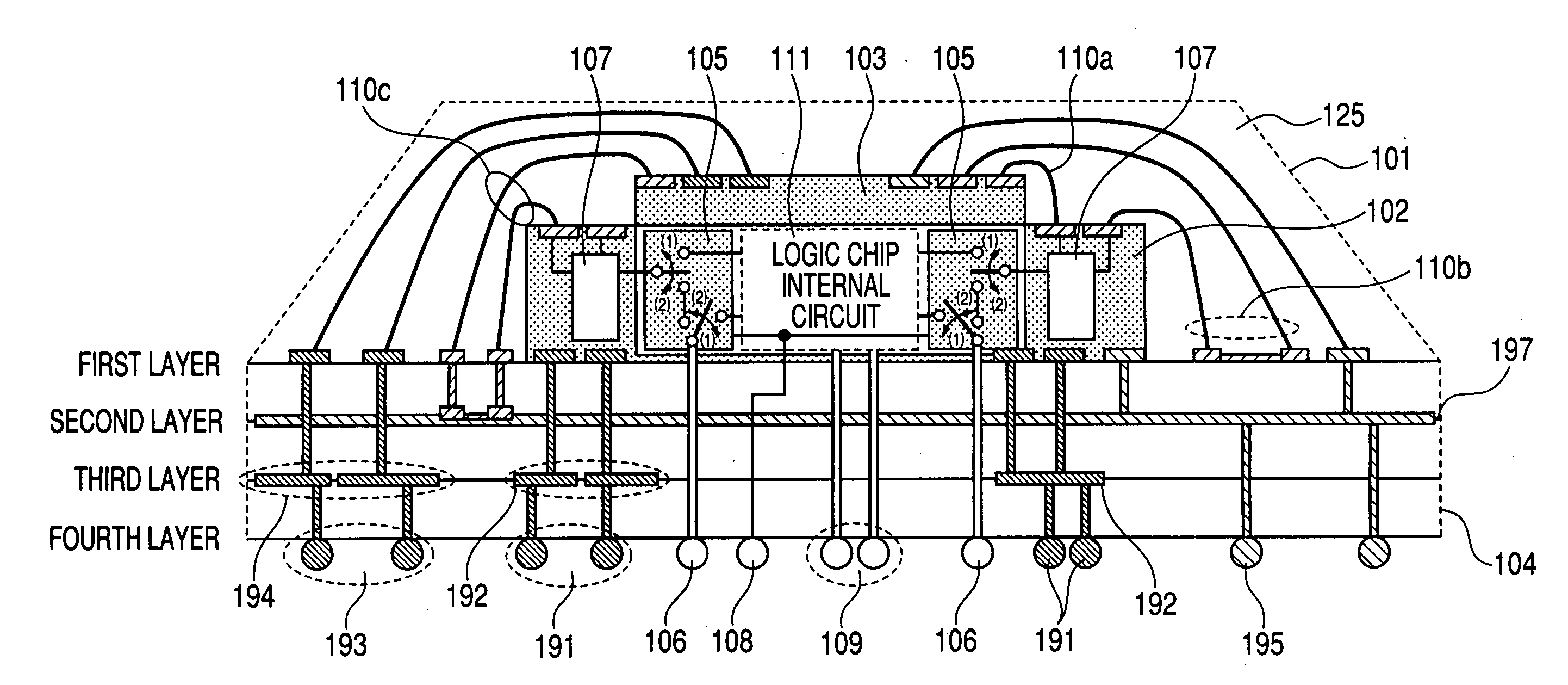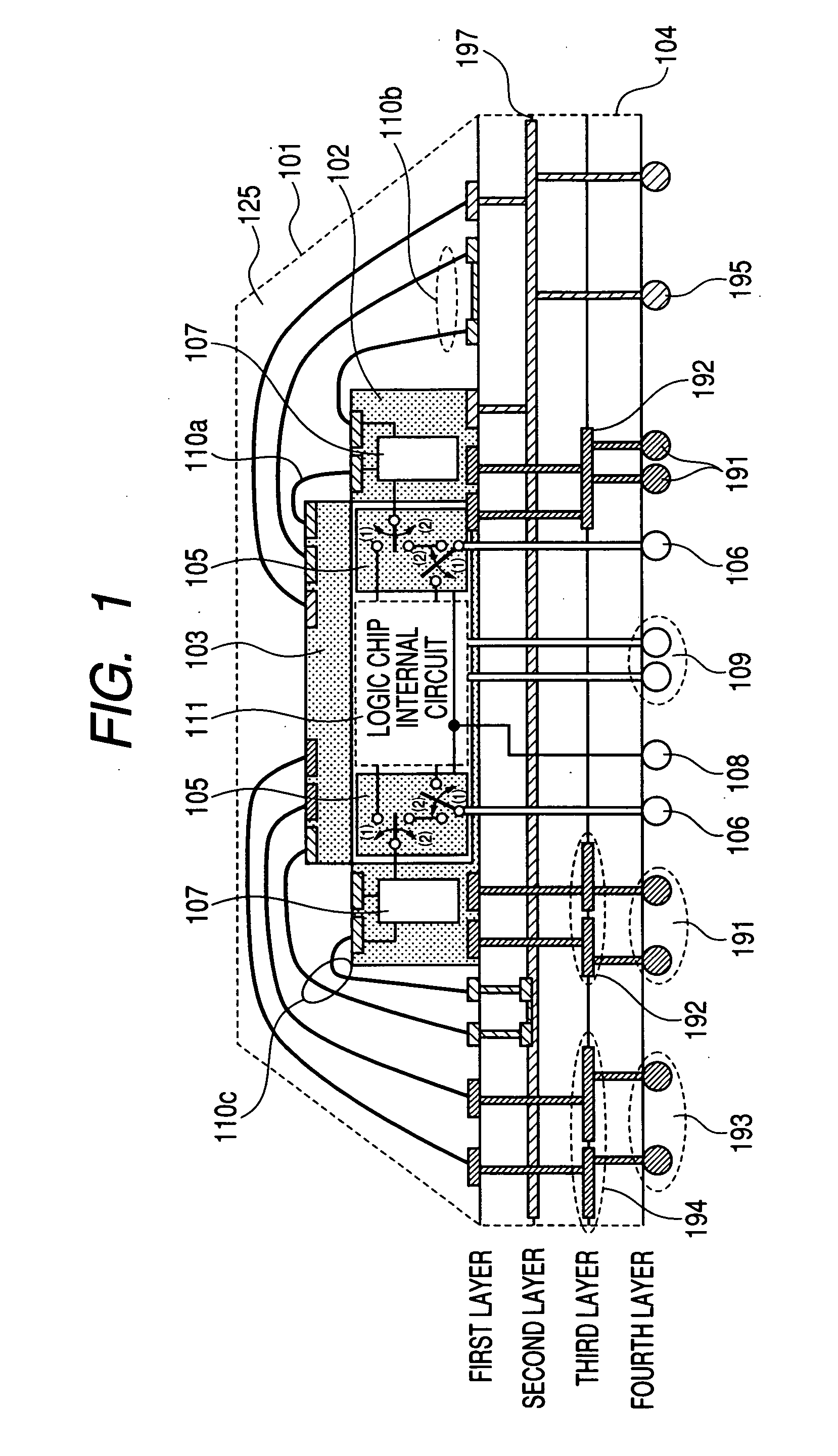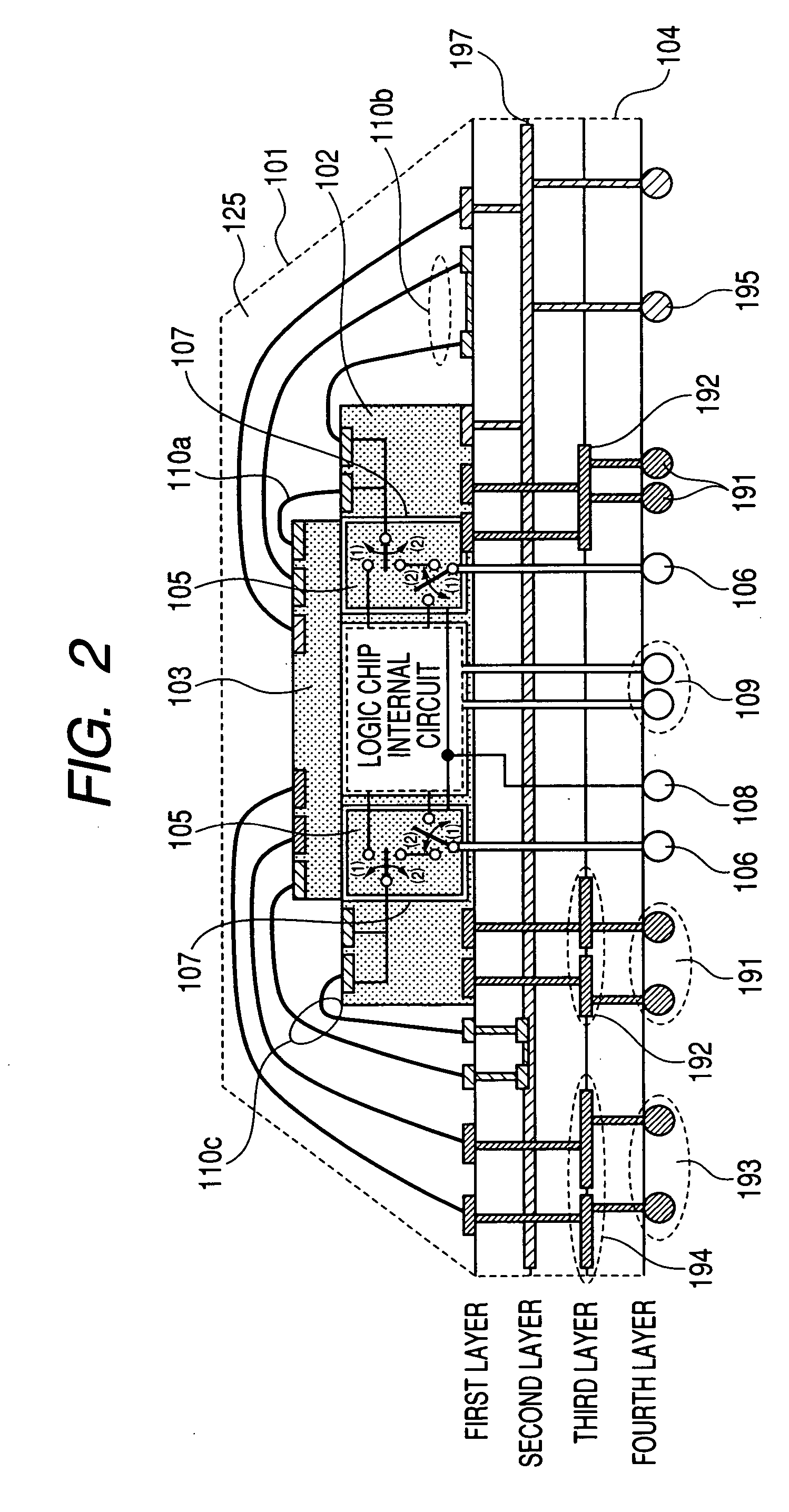Multichip package or system-in package
a multi-chip or system-in-one technology, applied in semiconductor devices, semiconductor/solid-state device details, instruments, etc., can solve the problems of limiting the wiring area that can be allocated to each power supply, unable to obtain sufficient areas, and no logic chips or memory chips employing a single power supply, etc., to achieve low noise and high operational reliability.
- Summary
- Abstract
- Description
- Claims
- Application Information
AI Technical Summary
Benefits of technology
Problems solved by technology
Method used
Image
Examples
first embodiment
[0030]FIG. 1 is a front sectional view of a first embodiment, showing a mounting structure of a typical multichip package or system-in package according to the present invention.
[0031] The first embodiment of a multichip package (MCP) or system-in package (SiP) 101 in FIG. 1 includes one logic chip 102, one or more low-power-consumption memory chips 103 for a hand-held device, and a package substrate 104 for mounting the two types of chips. The MCP or SiP 101 is constructed by mounting the logic chip 102 and the memory chip(s) 103 in an electrically connected condition on the package substrate 104 and then sealing both of the two types of chips with a resin 125. The logic chip 102 and the low-power-consumption memory chip(s) 103 may be constructed in stacked or horizontally mounted form on the package substrate 104. For multiple memory chips 103, however, stacked construction is excellent in that there is no need to increase the package substrate 104 in area.
[0032] The following d...
second embodiment
[0043]FIG. 4 is a front sectional view of a second embodiment, showing a mounting structure of another typical multichip package or system-in package according to the present invention. FIG. 5 is a block diagram showing the second embodiment of a multichip package or system-in package according to the present invention.
[0044] The second embodiment differs from the first embodiment in that a logic chip 102 includes, in a chip internal circuit, a test pattern generating circuit 201 which, for memory testing, generates a test pattern (i.e., an address signal, a data signal, and command signals such as / RAS and / CAS), thus enabling memory chip testing. Consequently, it is possible to make the test pattern generating circuit 201 valid within the logic chip 102 by giving a mode select signal (“High” or “Low” logical level signal or a rising / falling edge signal) from a mode select signal pin 108 or giving a test mode command signal from a logic signal pin 109. It is thus possible to test ...
PUM
 Login to View More
Login to View More Abstract
Description
Claims
Application Information
 Login to View More
Login to View More - R&D
- Intellectual Property
- Life Sciences
- Materials
- Tech Scout
- Unparalleled Data Quality
- Higher Quality Content
- 60% Fewer Hallucinations
Browse by: Latest US Patents, China's latest patents, Technical Efficacy Thesaurus, Application Domain, Technology Topic, Popular Technical Reports.
© 2025 PatSnap. All rights reserved.Legal|Privacy policy|Modern Slavery Act Transparency Statement|Sitemap|About US| Contact US: help@patsnap.com



